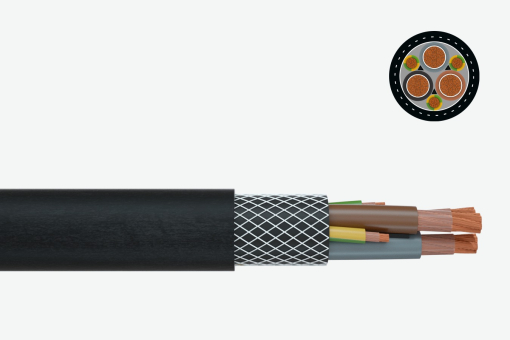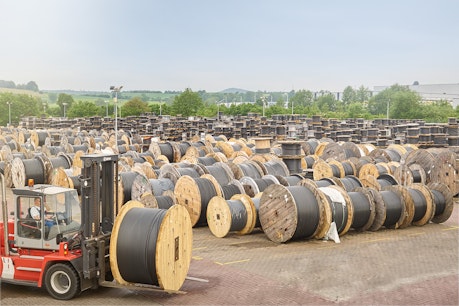3X95 + 3X50/3 0.6/1 kV BK

Your p/nr.
MOQ
MOQ: 1 km
Delivery time: approx. 30 weeks
in stock
in stock
Discounted residual lengths
Your p/nr.
Discounted residual lengths
Your p/nr.
| Customs Tariff Number (code number) | 85444995900000000 |
| Standard | VDE 0250-814 (wih reference to) |
| Conductor material | copper, bare |
| Conductor construction | Class 5 = flexible |
| Insulation | rubber (EPR) 3GI3 |
| Arrangement of protective conductors | split in the outer interstices |
| Material inner sheath | Gummi 5GM3 |
| Torsion protection | polyester braid |
| Torsion | +/- 50 °/m |
| Sheathing material | rubber (CR) 5GM5 |
| Colour of outer sheath | black |
| Flame-retardant | VDE 0482-332-1-2/IEC 60332-1-2 |
| Oil-resistant | EN 60811-2-1 |
| Max. temperature at conductor, °C | 90 °C |
| Permitted outer cable temperature, fixed, °C | -40 - +80 °C |
| Permitted outer cable temperature, moved, °C | -40 - +80 °C |
| Bending radius, fixed installation | 4 x Ø |
| Bending radius, moving application | 5 x Ø |
| Maximum tensile strength at the conductor | 20 N/mm² |
| Operating speed | 180 m/min. |
| Core identification | colours acc. to VDE 0293 (HD308) |
| Nominal cross section, sqmm | 95 mm² |
| Conductor resistance | 0.21 Ohm/km |
| Ampacity in air (30 °C) | 301 A |
| outer diameter min. | 43 mm |
| outer diameter max. | 46 mm |
| outer diameter approx. | 46.00 mm |
| Tensile strength (permanent) | 5700 N |
| Copper weight (GER) | 3216 |
| metal base Cu | 150 EUR/100 kg |
| net weight per 1000 | 4340 kg |
| Unit of measurement | metre |
| crane cables / hoist cables | yes |
| GOST/EAC | yes |
| Nominal voltage | 0,6/1 kV |
| Sheathing material | rubber |
| Cable shape | round |
| Halogen-free | no |
| Oil-resistant | yes |
| Colour | black |
| Conductor construction | class 5 = fine stranded |
| Insulation | rubber |
These cables are intended for applications where frequent winding and unwinding is necessary during operation, in particular with simultaneous tensile strain and/or torsional stress and/or forced guidance of the cable. Where excessive stress, particularly high dynamic tensile force may be expected, e.g. as a result of high acceleration figures, the permissible stress limits have to be determined individually.
All images shown here are for illustrations and product reference purposes only.


